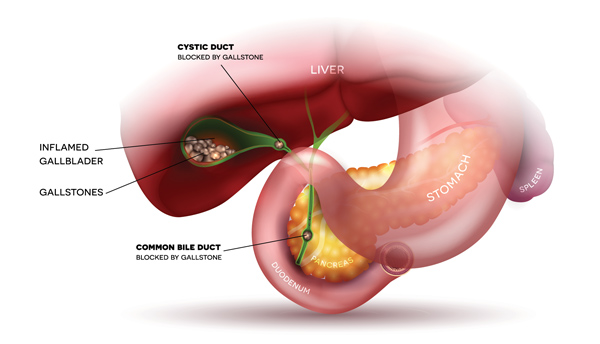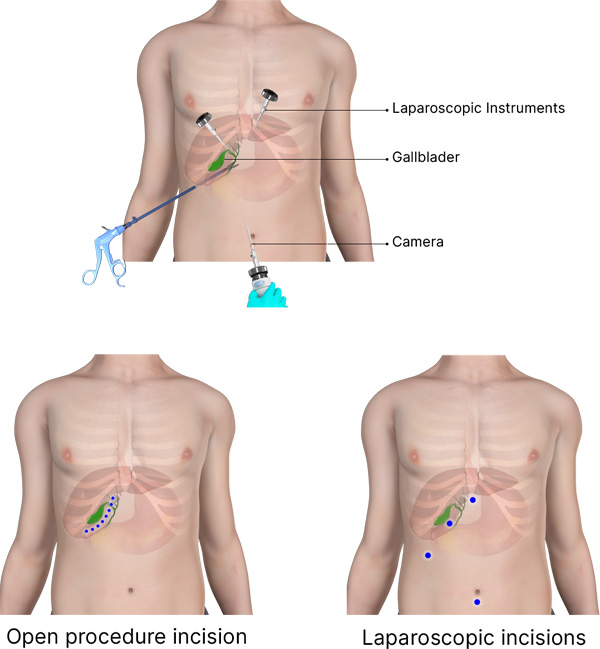Gallbladder Disorders
Gallbladder is a small pear-shaped organ located beneath the liver. Its function is to store and secrete bile into the small bowel and help with digestion of fat. When solutes within bile form sediments, gallstones are formed. This is a slow process and can take several years to complete. The exact cause for this is unknown. Risk factors for developing gallstones include familial history, female gender, age (4th decade of life), excess weight or history of rapid weight loss, and prior pregnancies. Gallbladder disease is very common, occurring in up to 15-20% of population in certain ethnicities.
Surgery is indicated when gallstones cause symptoms. Common symptoms include pain and nausea after eating. Less common symptoms include bloating, heartburn, vomiting, and poor digestion. Gallbladder pain is usually felt as a dull ache in the mid to right upper abdomen. It may radiate to the right flank, back, or shoulder. It may be quite severe, lasting minutes to hours after eating. It may even mimic chest pain. It may wake you up during sleep. If you are experiencing gallbladder symptoms, it is imperative that you discuss your options with your physician. Delay in care may result in serious complications such as inflammation and infection of gallbladder (cholecystitis), infection within common bile duct (cholangitis) from migration of stones outside the gallbladder, or inflammation and infection of pancreas (pancreatitis).

Because gallstones are formed by a defective gallbladder, surgery involves complete removal of the gallbladder. There is no effective alternative to surgery for patients experiencing gallbladder symptoms. Fortunately, gallbladder is not an essential organ and you can lead a perfectly normal life without it. After surgery, body adjusts quickly by enlarging the common bile duct in order to store excess bile.

Surgery for removal of the gallbladder, known as laparoscopic cholecystectomy, is commonly performed using minimally invasive approach through four very small incisions (cuts). This approach minimizes pain and other complications. It is a leap forward from the traditional open approach to gallbladder surgery, which is rarely indicated. Usually, the procedure takes 30 minutes to complete. In the majority of instances, the procedure is performed at ambulatory surgery centers and patients are discharged home after surgery. You can expect to recover fully within a few days and return to work within a week. In the first few weeks after surgery, it is advisable to avoid fatty meals to prevent bloating and diarrhea, while your body is adjusting to its new anatomy.

